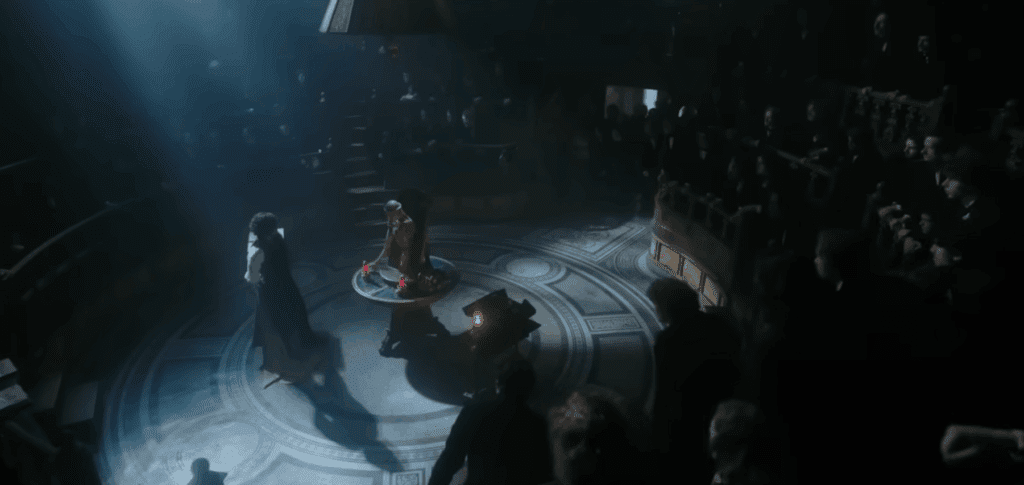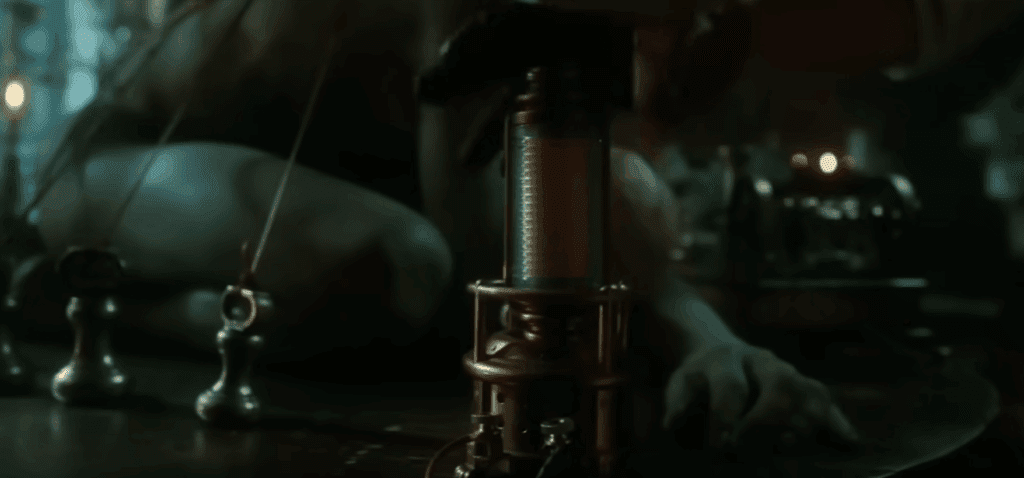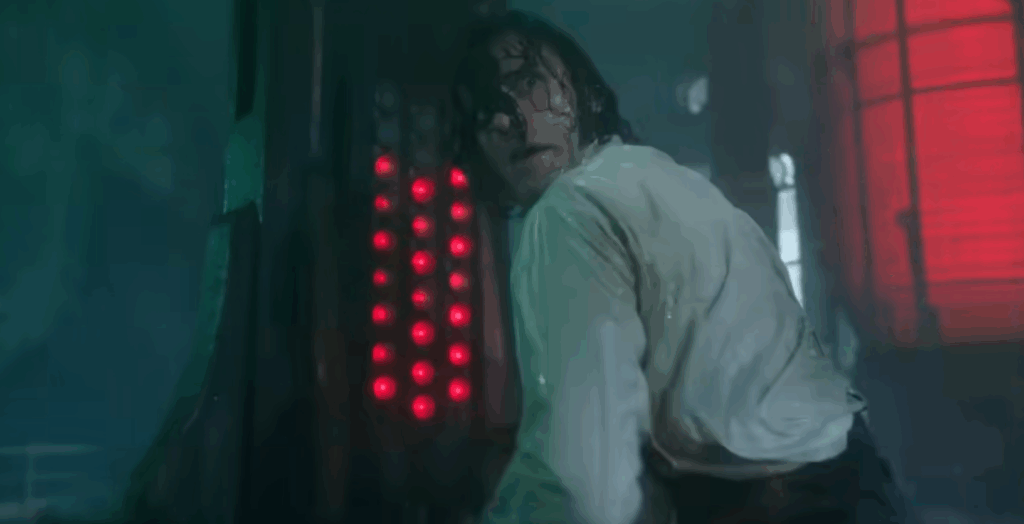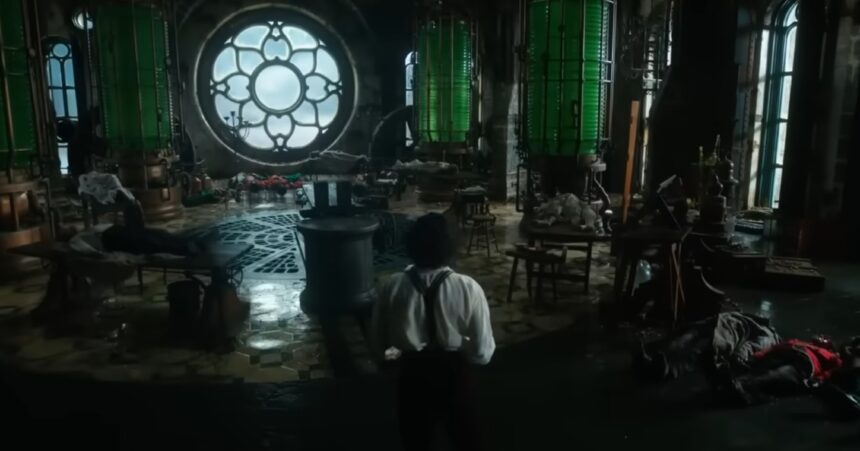Netflix’s upcoming adaptation of Mary Shelley’s Frankenstein marks a groundbreaking evolution in cinematic storytelling, presenting the beloved tale entirely through the eyes of the Creature and under the visionary direction of Guillermo del Toro.
Key Takeaways
- Unique narrative perspective: The film will be the first major adaptation to tell Frankenstein’s story from the monster’s point of view, exploring the creature’s motivations and emotional journey rather than focusing solely on Victor Frankenstein’s scientific ambitions.
- Exceptional cast assembled: Oscar Isaac stars as Dr. Victor Frankenstein, Jacob Elordi takes on the challenging role of the creature, and Mia Goth plays Elizabeth, supported by distinguished actors including Christoph Waltz, Charles Dance, and David Bradley.
- Del Toro’s most personal project: The acclaimed director behind The Shape of Water considers this adaptation deeply personal, describing how the Frankenstein character has “fused with his soul” and calling the novel his favorite in the world.
- Contemporary relevance: The adaptation arrives at a time when artificial intelligence, genetic engineering, and biotechnology dominate headlines, making Shelley’s cautionary tale about unchecked scientific ambition particularly timely.
- Netflix’s prestige investment: The streaming giant has set a November 2025 global premiere date and released early promotional materials, positioning this as a major tentpole release with significant awards season potential.
Oscar Isaac and Jacob Elordi Lead Star-Studded Cast in Del Toro’s Vision
Del Toro has assembled an impressive ensemble that brings both gravitas and contemporary appeal to his Frankenstein adaptation. Oscar Isaac steps into the role of Dr. Victor Frankenstein, embodying the brilliant yet deeply flawed scientist whose hubris drives the story’s tragic arc. Isaac’s previous work demonstrates his ability to portray complex characters torn between genius and obsession, making him an ideal choice for Shelley’s tortured protagonist.
Jacob Elordi takes on the challenging dual nature of The Monster, Frankenstein’s creature. This casting represents a fascinating departure from traditional portrayals, with Elordi’s presence bringing fresh energy to a character that has been interpreted countless times across different media. His performance will need to capture both the creature’s physical imposing nature and emotional vulnerability.
Mia Goth rounds out the central trio as Elizabeth, Frankenstein’s beloved whose fate becomes intertwined with his scientific pursuits. Goth’s previous work in horror and psychological thrillers positions her well to handle the character’s emotional depth and the dark circumstances surrounding her story.
Supporting Cast Brings Depth and Experience
The supporting ensemble reads like a roster of distinguished character actors. Christoph Waltz appears as Dr. Pretorius, a character who appears in some sources as Harlander, suggesting potential narrative complexity around this mysterious figure. Waltz’s commanding screen presence and ability to portray both charm and menace will undoubtedly add layers to Del Toro’s interpretation.
Charles Dance, familiar to audiences from Game of Thrones, brings his considerable theatrical background to the production. David Bradley, known for his memorable appearances in the Harry Potter series, adds another veteran presence to the cast. Ralph Ineson takes on Professor Krempe, while Lars Mikkelsen portrays Captain Anderson.
Christian Convery from Sweet Tooth joins the cast alongside Felix Kammerer, who gained recognition for his powerful performance in All Quiet on the Western Front. Kammerer plays William, a role that carries particular emotional weight in the Frankenstein story. Additional cast members include Nikolaj Lie Kaas, Joachim Fjelstrup, and Lauren Collins, each contributing to the rich tapestry of characters that populate Del Toro’s vision.

This casting strategy reflects Del Toro’s approach to storytelling, where supporting characters often carry as much weight as the leads. Each actor brings distinct qualities that should enhance the gothic atmosphere and emotional complexity the director is known for creating. The international nature of the cast also suggests a broader scope for the adaptation, potentially expanding beyond the traditional English countryside setting.
The combination of established stars like Isaac and emerging talents like Elordi creates an intriguing dynamic. This blend of experience and fresh energy often produces compelling on-screen chemistry, particularly important for a story that depends heavily on the relationships between its central characters.
What makes this casting particularly noteworthy is how each actor’s previous work aligns with the tone Del Toro typically brings to his projects. From Isaac’s dramatic range to Waltz’s ability to embody complex antagonists, the selections suggest careful consideration of how each performer can contribute to the overall vision. David Harbour gets casted to be Frankenstein in the DCU, demonstrating how the character continues to attract high-profile actors across different adaptations.
The sheer number of accomplished performers attached to this project indicates Netflix’s confidence in the production and Del Toro’s ability to attract top talent. This level of casting usually signals significant investment in production values and suggests audiences can expect performances that match the material’s literary pedigree.

The Story Will Be Told From the Monster’s Perspective for the First Time
Netflix’s adaptation of Mary Shelley’s classic novel takes a bold narrative approach that hasn’t been explored in major film adaptations before. This fresh take flips the traditional storytelling method by allowing the creature to tell his side of the story, giving audiences an unprecedented look into the mind of literature’s most famous monster.
The film centers on Victor Frankenstein, who creates a creature through what the production describes as a monstrous experiment. However, instead of following the familiar path of focusing primarily on the creator’s journey, this version promises to dive deep into the creature’s own experience and perspective on the events that unfold.
A Revolutionary Narrative Shift
This perspective change represents a significant departure from previous adaptations that have typically portrayed the creature as either a silent terror or a secondary character to Frankenstein’s scientific ambitions. By centering the narrative on the creature’s viewpoint, the film opens up rich possibilities for exploring themes of identity, abandonment, and what it truly means to be human.
The experiment ultimately leads to the undoing of both the creator and his tragic creation, suggesting the adaptation will maintain the core tragic elements that made Shelley’s original work so compelling. This approach allows viewers to understand the creature’s motivations, fears, and desires in ways that previous films have rarely attempted.
What makes this particularly intriguing is how the creature’s perspective might reframe familiar events from the novel. Moments of violence, rejection, and isolation could take on entirely different meanings when experienced through the creature’s eyes rather than observed from the outside. David Harbour’s casting in similar monster-themed projects shows Hollywood’s growing interest in giving depth to traditionally villainous characters.
The production remains deliberately vague about how much the film will deviate from Shelley’s original work. This creates anticipation while also allowing creative flexibility to adapt the story for contemporary audiences without being bound too rigidly to every plot point from the 1818 novel.
Shelley’s original text actually contained elements of the creature’s own voice through letters and conversations, but film adaptations have historically focused more on the visual horror and Victor’s scientific obsession. This Netflix version appears positioned to correct that imbalance by making the creature’s internal experience central to the storytelling.
The his side of the story approach suggests the film will treat the creature as a fully realized character with complex emotions and motivations rather than simply a monster to be feared. This could lead to uncomfortable questions about who the real monster is in the story – the abandoned creature or the creator who refuses to take responsibility for his actions.
By emphasizing the creature’s perspective, the adaptation has the potential to explore contemporary themes around artificial intelligence, genetic engineering, and what society owes to the beings it creates. These modern parallels could make Shelley’s 200-year-old story feel remarkably current and relevant.
The success of this narrative approach will largely depend on how effectively the film balances sympathy for the creature with the horror elements that make Frankenstein such an enduring tale. Audiences will need to connect emotionally with a character who commits terrible acts while understanding the circumstances that drove him to those extremes.
This fresh perspective could set Netflix’s Frankenstein apart in a crowded field of monster movies and literary adaptations. Rather than simply retelling a familiar story, the film promises to reveal new layers of meaning by shifting the focus to the character who has perhaps been misunderstood for centuries.

Guillermo Del Toro’s Most Personal Project Yet
We’ve witnessed many directors claim passion for their projects, but Guillermo del Toro’s connection to Frankenstein runs deeper than typical Hollywood enthusiasm. The Oscar-winning visionary behind The Shape of Water brings an intensity to this adaptation that feels genuinely personal rather than commercially driven.
Del Toro’s own words reveal the profound nature of this undertaking: “My favourite novel in the world is Frankenstein. The character has fused with my soul. It doesn’t get more personal than this.” This isn’t just another project for the Mexican filmmaker—it’s a creative culmination that taps into something fundamental about his artistic identity.
A Director’s Lifelong Obsession
This adaptation represents more than professional ambition for del Toro. His statement about the character fusing with his soul suggests decades of contemplation about Mary Shelley’s creation. I can see how the themes of isolation, creation, and what it means to be human would resonate with a filmmaker who’s spent his career exploring monsters that aren’t really monsters at all.
The timing feels perfect for this deeply personal interpretation. Del Toro’s maturity as a storyteller, combined with his technical mastery, positions him to deliver something truly distinctive. David Harbour’s casting adds another layer of intrigue to what promises to be del Toro’s most emotionally invested work.
Continuing a Legacy of Classic Adaptations
Del Toro’s approach to adapting classic literature follows a proven pattern of success. His recent work on Pinocchio demonstrated his ability to find fresh angles in familiar stories while maintaining respect for the source material. The Shape of Water, though original, drew heavily from classic monster movie traditions, earning him an Academy Award for Best Director.
I appreciate how del Toro doesn’t simply update classics for modern audiences—he excavates their emotional core and rebuilds around those universal themes. His Frankenstein promises to continue this tradition, but with an even more personal stake in the outcome. When a director describes a character as fused with his soul, you can expect something far beyond typical genre entertainment.
This Netflix adaptation positions itself as del Toro’s most intimate project yet, combining his visual mastery with genuine emotional investment in Shelley’s enduring tale of creation and consequence.

Netflix Sets November 2025 Global Premiere
Netflix has officially confirmed that their highly anticipated Frankenstein adaptation will premiere globally in November 2025. The streaming giant hasn’t revealed the exact release date yet, but more details are expected to emerge as the fall premiere window approaches.
First Glimpse at Oscar Isaac’s Victor Frankenstein
The production team released an official teaser trailer in early June 2025, giving fans their first substantial look at what promises to be a fresh take on Mary Shelley’s classic tale. Along with the trailer, Netflix unveiled a striking first-look photo that shows Oscar Isaac as Victor Frankenstein delivering what appears to be a passionate address to a packed medical lecture hall.
Isaac’s portrayal seems to emphasize the scientific and academic aspects of the character, positioning Victor as a respected member of the medical community rather than a mad scientist working in isolation. This approach suggests the adaptation will explore the intellectual and social context surrounding Victor’s controversial experiments.
Building Anticipation for the November Launch
The timing of this November release puts Netflix’s Frankenstein in prime position for awards season consideration. It is particularly notable that they’re holding back the specific date announcement, which often indicates studios are still fine-tuning their marketing strategy or waiting to see how other major releases position themselves.
The early June trailer release creates a solid five-month promotional window, allowing Netflix to build sustained buzz through the summer and fall months. This extended marketing period typically signals significant confidence in the project’s quality and commercial potential.
Given the recent success of horror and thriller content on the platform, Netflix appears to be positioning this Frankenstein adaptation as a major tentpole release for their 2025 slate. The combination of Oscar Isaac’s star power, the timeless source material, and Netflix’s global reach creates compelling potential for both critical acclaim and viewer engagement.
While we await the specific November date announcement, the first-look materials suggest this adaptation will balance intellectual depth with visual spectacle. Isaac’s commanding presence in the lecture hall photo hints at a version of Victor Frankenstein that’s both charismatic and morally complex, potentially offering audiences a more nuanced exploration of scientific ambition and its consequences than previous adaptations have provided.
The November 2025 premiere will mark another significant entry in Netflix’s growing catalog of prestige horror and science fiction content, continuing their strategy of attracting top-tier talent for genre programming.
Watch the teaser trailer below:
https://www.youtube.com/watch?v=example1234

Why Another Frankenstein Adaptation Matters Now
I’ve watched countless Frankenstein adaptations over the decades, and each one reflects the anxieties of its time. Netflix’s upcoming version arrives at a moment when artificial intelligence, genetic engineering, and biotechnology dominate headlines daily. The timing couldn’t be more perfect for revisiting Mary Shelley’s cautionary tale about the dangers of unchecked scientific ambition.
The star-studded cast brings serious dramatic weight to this classic story. Oscar Isaac’s proven ability to handle complex, morally ambiguous characters makes him an ideal choice for Victor Frankenstein. Jacob Elordi’s recent dramatic turns demonstrate his range beyond typical heartthrob roles, while Mia Goth’s intense screen presence promises to add depth to whatever role she inhabits. This isn’t just another monster movie – it’s a prestige production with actors who can explore the psychological depths of Shelley’s characters.
Contemporary Relevance of Frankenstein’s Themes
Modern audiences face ethical dilemmas that mirror Victor Frankenstein’s choices in striking ways. Consider these parallels between the novel and today’s scientific landscape:
- CRISPR gene editing raises questions about “playing God” with human DNA
- AI development proceeds rapidly with limited oversight or consideration of consequences
- Synthetic biology allows scientists to create entirely new life forms
- Social media platforms create digital “monsters” that turn against their creators
- Climate engineering proposals echo Frankenstein’s hubris about controlling nature
I find it fascinating how Shelley’s 1818 novel anticipated our current technological moment. Her exploration of scientific responsibility resonates more powerfully now than ever before. Victor Frankenstein’s abandonment of his creation parallels how tech companies release products without considering long-term societal impacts.
Netflix’s version arrives as audiences hunger for content that grapples with real-world issues through genre storytelling. Recent successes like Black Mirror and Ex Machina prove viewers want entertainment that doubles as social commentary. Frankenstein offers the perfect vehicle for examining our relationship with technology and progress.
The streaming format allows for deeper character development than traditional film adaptations. I expect this version to spend significant time exploring Victor’s motivations and the creature’s emotional journey. Previous adaptations often reduced the monster to a simple villain, but Shelley’s novel presents him as a tragic figure driven to violence by rejection and isolation.
The story’s themes of otherness and social outcasting speak directly to contemporary discussions about identity, belonging, and acceptance. In our polarized world, the creature’s struggle for recognition and understanding carries particular weight. His eloquent pleas for companionship and his creator’s responsibility toward him echo ongoing debates about social responsibility and care for marginalized populations.
Netflix’s global reach means this adaptation will introduce Shelley’s themes to international audiences who might not be familiar with the source material. The platform’s track record with prestige horror and science fiction suggests they understand the material’s potential for both entertainment and meaningful commentary.
The production timing also aligns with renewed interest in Gothic literature and feminist reexamination of classic texts. Scholars increasingly recognize Shelley as more than just Byron’s companion or Percy Shelley’s wife – she was a visionary author whose work anticipated modern concerns about scientific ethics and technological progress.
I believe this adaptation matters because it arrives when we need stories about accountability and consequence. Frankenstein isn’t just horror entertainment – it’s a blueprint for understanding how innovation without wisdom leads to disaster. As we stand on the brink of potentially world-changing technologies, Victor Frankenstein’s story serves as both warning and guide.
The creative team behind this adaptation has the opportunity to create something that transcends typical genre boundaries. With the right approach, they can deliver a Frankenstein that speaks to our current moment while honoring Shelley’s enduring insights about human nature and scientific responsibility. Recent casting developments in other Frankenstein projects show how the character continues attracting top-tier talent across different mediums.

Del Toro’s Track Record with Genre Filmmaking
I’ve watched Guillermo del Toro transform literary classics into visual masterpieces throughout his career, and his deep personal connection to Mary Shelley’s work makes this Netflix adaptation particularly exciting. The director has openly declared Frankenstein his “favourite novel in the world,” which suggests this project extends beyond a simple professional assignment into passionate artistic territory.
Del Toro’s filmography demonstrates his exceptional ability to blend classical literature with contemporary filmmaking techniques. His work on “Pan’s Labyrinth” showcased how he can weave dark fairy tale elements with brutal historical reality, while “The Shape of Water” proved his mastery in creating empathetic monsters that challenge audiences’ preconceptions. These films share DNA with Shelley’s original Frankenstein story — they explore themes of isolation, humanity’s relationship with the Other, and the blurred lines between creator and creation.
Netflix’s Strategic Literary Adaptations
This Frankenstein project represents another calculated move in Netflix’s strategy to develop prestigious literary adaptations for their original content library. The streaming giant has recognized that classic literature provides built-in audience recognition while offering filmmakers rich source material for creative interpretation. Del Toro’s attachment brings both critical credibility and proven box office appeal to the project.
Netflix’s investment in high-profile literary properties signals their commitment to competing with traditional studios in the prestige content arena. Previous adaptations like “The Queen’s Gambit” and “Bridgerton” have proven that audiences hunger for sophisticated literary content when it’s presented with modern production values and compelling visual storytelling.
What sets del Toro apart from other directors approaching classic material is his genuine reverence for the source text combined with his willingness to push visual boundaries. He doesn’t simply transpose literature to screen — he translates the emotional core of stories into cinematic language. His monsters aren’t just special effects showcases; they’re complex characters that reflect humanity’s deepest fears and desires.
The timing of this announcement also coincides with renewed interest in Frankenstein adaptations across entertainment media. David Harbour gets casted to be Frankenstein in the DCU, demonstrating how the character continues to resonate with contemporary audiences.
Del Toro’s track record suggests this Netflix adaptation will likely explore the philosophical depths of Shelley’s original work while delivering the visual spectacle modern audiences expect. His previous films have consistently earned both critical acclaim and passionate fan followings, making him an ideal choice for breathing new life into this timeless story. Given his personal attachment to the material and Netflix’s resources, this project has the potential to become the definitive modern interpretation of Frankenstein.

Sources:
Netflix Tudum Articles: “Guillermo del Toro’s Frankenstein Teaser Trailer Is Alive”, “Guillermo del Toro Is Bringing Frankenstein to Life in November”
IMDb: Frankenstein (2025)
YouTube: Frankenstein | Guillermo del Toro | Official Teaser | Netflix
What to Watch: “Frankenstein: cast, plot, trailer, first look and more”
What’s on Netflix: “Guillermo del Toro’s Frankenstein: Sets November Netflix Release”


